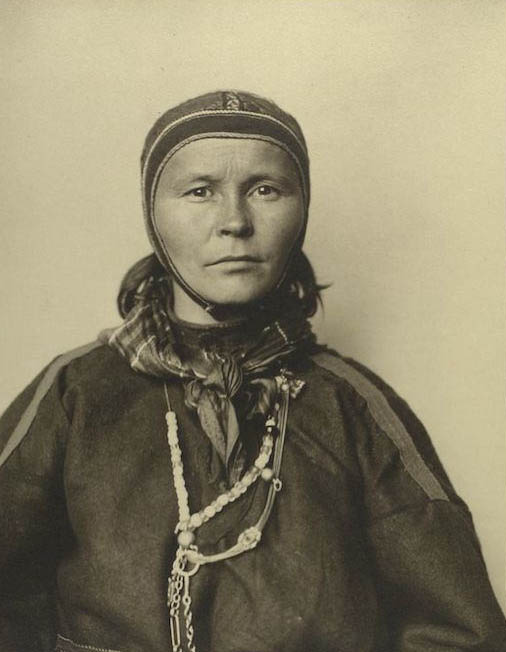
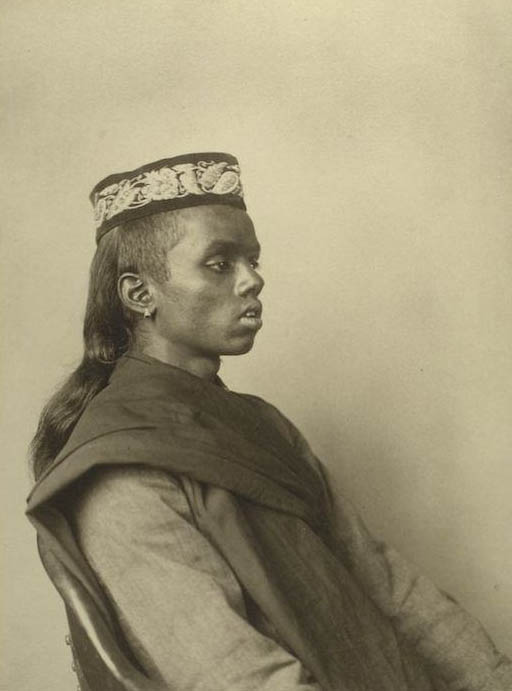
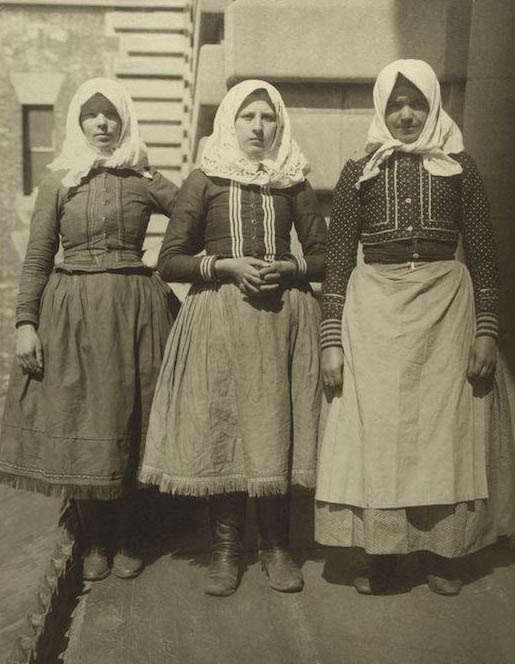
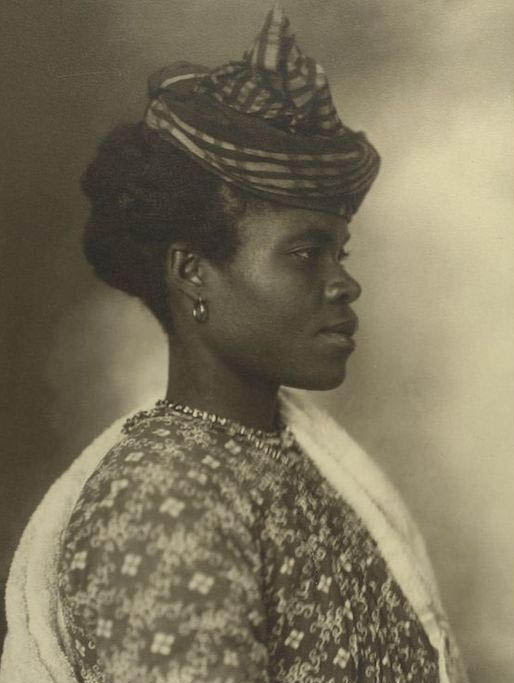
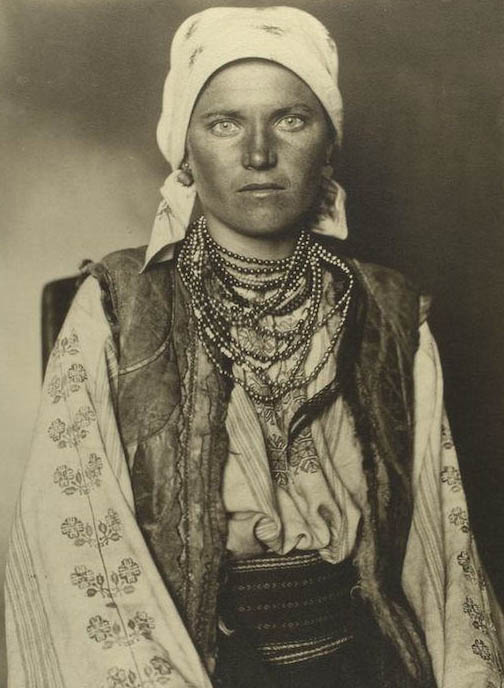
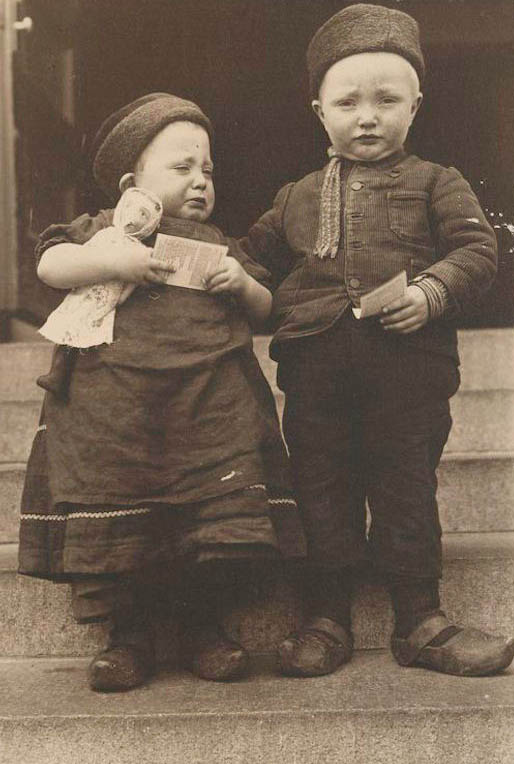
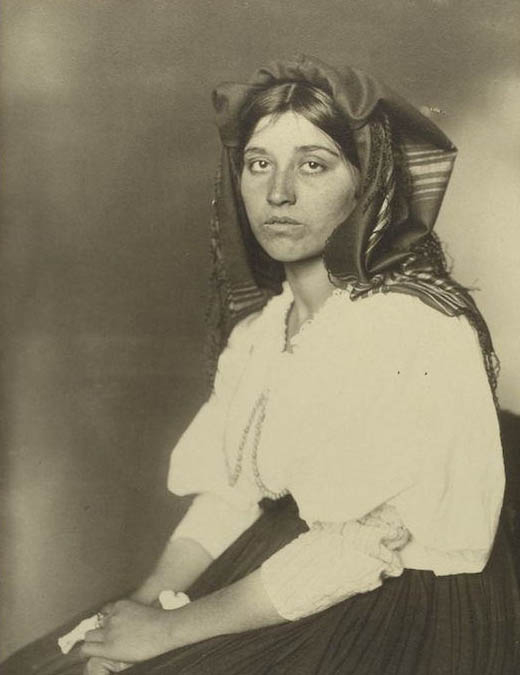
Portraits of Ellis Island Immigrants
Between 1892 and 1954, Ellis Island served as an immigration inspection station for millions of immigrants arriving into the United States. The first immigrant to pass though the station was 17-year-old Annie Moore from Cork, Ireland, one of the 700 immigrants arriving on the opening day on January 1, 1892. The first and second class passengers were considered wealthy enough not to become a burden to the state and were examined onboard the ships while the poorer passengers were sent to the island where they underwent medical examinations and legal inspections. These images of people wearing their folk costumes were taken by amateur photographer Augustus Sherman who worked as the Chief Registry Clerk on Ellis Island from 1892 until 1925. The people in the photographs were most likely detainees who were waiting for money, travel tickets or someone to come and collect them from the island. In 1907, the photographs were published in National Geographic, and they were also hung on the walls of the lower Manhattan headquarters of the federal Immigration Service. In 2005, Aperture brought out a book of the photographs, containing 97 full-page portraits.
1907 was the busiest year for Ellis Island, with an all-time high of 11,747 immigrants arriving in April. Approved immigrants spent between three to five hours on the island where they underwent medical examinations and were asked questions regarding their occupation and the money they owned, it being preferable for them to have a starting sum when they arrived in the country. Two percent of the immigrants were denied admission on the grounds of suffering from contagious diseases or insanity, or alternatively by virtue of having a criminal background. In the 1920s, restrictions were placed on the percentage of immigrants arriving from various countries or ethnic backgrounds, as immigrants from Southern and Eastern Europe were seen as inferior to the earlier immigrants from Northern and Western Europe. The facilities later served as a detention and deportation processing station, and during the Second World War, German, Italian, and Japanese resident aliens were detained on the island.
Nam arcu dui
Aliquam volutpat lacinia nunc, sit amet interdum sem tincidunt ut. Vivamus mattis nisl purus, ac bibendum lorem congue et. Nunc sollicitudin erat facilisis ligula tristique iaculis. Donec nunc diam, mattis eget sem et, laoreet ullamcorper diam. Etiam vehicula at leo eu sodales. Phasellus ligula ipsum, blandit eu tristique nec, vestibulum tincidunt mi. Nullam laoreet tempus faucibus. Sed quam diam, dignissim eget finibus vel, egestas consectetur mauris. Nulla vehicula, justo non dignissim bibendum, magna tellus tempor elit, in hendrerit felis sapien vel ante. Quisque ac congue tellus. Aliquam tincidunt magna sit amet sem lobortis, non accumsan felis efficitur. Praesent malesuada nunc ligula, vel posuere odio viverra sit amet. Aenean et cursus est. Sed semper aliquet tortor sodales egestas.
Porta a magna id
Quisque vitae vulputate tellus. Nunc vel sollicitudin magna, eget vulputate felis. Donec maximus sagittis neque. Duis interdum facilisis est, vitae efficitur lectus malesuada ac. Phasellus vel orci semper, imperdiet lorem ut, volutpat mauris. Aliquam id laoreet arcu. Aenean nec scelerisque massa. Fusce volutpat eros risus, eget feugiat sapien egestas vel. Ut risus erat, vulputate at interdum et, posuere id turpis. Cras nisl ante, lacinia eu ex ac, eleifend auctor nisi. Suspendisse potenti. Euismod dictum velit. Fusce pulvinar sodales nibh sit amet laoreet. Nam mattis felis ac mattis facilisis. Nullam elementum auctor urna at scelerisque.
Early history
Originally much of the west shore of Upper New York Bay consisted of large tidal flats which hosted vast oyster banks, a major source of food for the Lenape population who lived in the area prior to the arrival of Dutch settlers. There were several islands which were not completely submerged at high tide. Three of them (later to be known as Liberty Island, Black Tom Island and Ellis Island) were given the name Oyster Islands by the settlers of New Netherland, the first European colony in the region. The oyster beds would remain a major source of food for nearly three centuries. Landfilling to build the railyards of the Lehigh Valley Railroad and the Central Railroad of New Jersey would eventually obliterate the beds, engulf one island and bring the shoreline much closer to the others.[23] During the colonial period Little Oyster Island was known as Dyre's, then Bucking Island. In the 1760s, after some pirates were hanged from one of the island's scrubby trees, it became known as Gibbet Island.[24] It was acquired by Samuel Ellis, a colonial New Yorker and merchant possibly from Wales, around the time of the American Revolution. In 1785 he unsuccessfully attempted to sell the island.